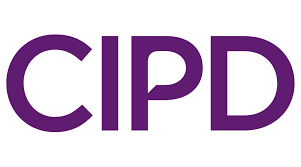Are you looking for that little bit extra from your accountant?
We offer something different from the traditional Accountancy Practices.
FIND OUT MORE
Would you like an accountant that cared about your business' success as much as you do?
ADM Accountancy Services Ltd is a Chartered Management Accountants based in Bishop's Cleeve, Cheltenham. We support businesses throughout Cheltenham and the surrounding areas, including Tewkesbury, Gloucester, Stroud and Evesham.
MORE ABOUT US
We offer more to our clients than traditional accountancy practices.
Xero Services
Xero is a cloud-based platform which means you can access your accounts from any location, on any device, and your accountant can too! If you're working remotely, Xero offers the perfect solution to keep on top of your accounts and view stats in real-time.
As a Xero Gold Partner, we can train and advise you on Xero and how it can streamline your business accounting. If you need advice transferring your accounts to Xero, we can help get you up and running!
Our Services
ADM Accountancy offer a broad range of accountancy services to suit small and medium-sized businesses and professional services contractors. From start-ups to established companies looking to expand, we can help your business to reach its full potential.
Case Studies
Our client base covers a wide spectrum of small to medium-sized businesses. We also support successful Professional Services Contractors working in a variety of industries, such as IT, Creative and Marketing. Read more about some of the clients we work for below.
FIND OUT MORE
Our Blog
At ADM, we like to offer something more, read our latest updates below.
VISIT OUR BLOG

Every business owner must know where the money in their company comes from and where it goes. That’s why financial management is one of the most important things to keep in mind. What is a business budget? Simply put, it's a financial plan that gives a company relevant information on revenue, expenditure, and capital. Business owners also use them as guides to forecast earnings and expenditures and perhaps to hold someone accountable for mistakes and such. If you want an accurate budget estimate, follow the six steps below. Step 1 – Estimate fixed costs The first step is to work out the fixed costs, which is relatively easy. Simply list all expenses and then identify those that show repetitive costs that don't change by the month. These include expenses such as rent, equipment leases, insurance, manufacturing costs, etc. Add up all the fixed costs to get the number and use it for a period of 3, 6, or 12 months. Step 2 – Identify variable expenses Variable expenses are those that are not constant - the complete opposite of fixed costs. Although it's easy to identify variable expenses, it's harder to forecast the numbers as they vary every month. To identify and get an accurate prediction of variable costs, it's critical to record and tally them for a period of time. You’ll soon get an average number of each variable expense. Step 3 – Work out one-time costs Most businesses also have one-time expenses. And although it’s not nearly as frequent as fixed and variable costs, a business budget wouldn't be complete without accounting for the 'sunk costs'. Buying new software or equipment are examples of one-time costs, so is something like getting new furniture for the office. Step 4 – Project your revenue The next logical step is to project your future revenue. After all, one of the reasons to build a business budget is to have something that would allow business owners to compare actual and projected revenue. This particular step allows for the setting of clear goals and understanding how to meet those objectives. Step 5 – Track profits and losses Working out the net profit margin is another necessary step. You can do this by deducting expenses, taxes, and any accrued interest from revenue. The money left over, as a percentage of revenue, indicates the net profit margin. This is a key indicator of profitability and can help highlight issues in cash flow, management, marketing, operating costs, and other areas. Step 6 – Adjust the budget No one should see a business budget as set in stone. It’s because the changing market trends, consumer demand, and other factors can influence the budget. Therefore, the final step is to make the necessary tweaks. A business budget is not static but rather a flexible estimation. By tweaking the budget, you can position your company to adapt to exterior changes. It can also help in changing goals or diverting funds towards meeting the most important objectives faster. Remember, having a business budget is not enough to ensure financial stability. Every business also has to set up an emergency fund with the budget as a guide. Continually revisiting the budget is a must. And failure to re-evaluate can affect the company's financial health and lead to overspending in all the wrong places. If you need help with budgeting and business accounting, the team at ADM Accountancy would love to hear from you. Call 01242 679767 or visit www.admaccountancy.co.uk .

Are you uncertain about the level of success you achieved? There's a quick way to get an overview of your finances. Not enough companies run a profitability analysis - a defining indicator of profit. Such an analysis relates to costs and overall revenue and it can provide insights into how a business runs. The occasional analysis can also indicate if it's time to make some changes. Maybe some clients require too much time for the money. Perhaps there are other opportunities around the corner that you can jump on. Either way, it should be on your list of tasks if you want to ensure long-term business growth. And here's a simple blueprint to follow for a successful profitability analysis. Step #1. Calculate Margins Two of the most important variables in a profitability analysis are gross and net profit margins. You can get the gross profit margin by knowing your sales revenue minus the cost of labour. For the net profit margin, you must subtract all expenses from your revenue to get the magic number - the margin - and then divide the previous result by your revenue Don't forget to look at the segment profits, too. Odds are you offer a suite of services that each has its own revenue stream. Take the numbers for each segment, subtract the costs, and include overheads in your calculation. If you do this, you get a more detailed insight into how money moves in your business. Step #2. Perform Client Valuation Here, you must look at each client and figure out how much each of them brings. Performing a client valuation essentially means to determine the worth of each client. So, subtract from the revenue all of your costs, such as marketing, hourly labour, travel expenses, and so on. After all, you want to find out the costs of keeping each client satisfied. Some clients may not pay a lot for your services. But you may have a better profit margin with them if their projects take very little time from you or your team. Maybe you have good cash flow. But it's possible that when you draw the line, there's not a lot of profit in it. Step #3. Look at the Past Numbers A thorough profitability analysis looks at past quarters over the years. Why? Although your current numbers may look good on paper, you need something to compare them to if you want to know where you stand. Step #4. Benchmark Industry Ratios Your numbers only mean something in the context of your niche. It’s because profitability numbers aren't the same in accounting as in health care, education, e-commerce, etc. If you look at your past and current numbers, you can figure out your business's progress so far. But what about compared to your competitors? What about your position in relation to the market? Always be sure to check average industry ratios to give you a better sense of where your company is as opposed to where it should be. Do It for Peace of Mind and Direction A good profitability analysis can help curb anxiety when it comes to your business. At the same time, it can tell you what you should be doing to improve and grow it. If you ever find your business lacking direction, remember that an analysis can help you spot issues that you couldn't otherwise. It’s a game changer. Speak to one of the team at ADM Accountancy about creating a personalised analysis for your business on 01242 679767.
Can we help? Let’s talk.
We are here for you. If you are looking for an accountancy firm that ticks all the boxes, contact us today.
GET IN TOUCH







